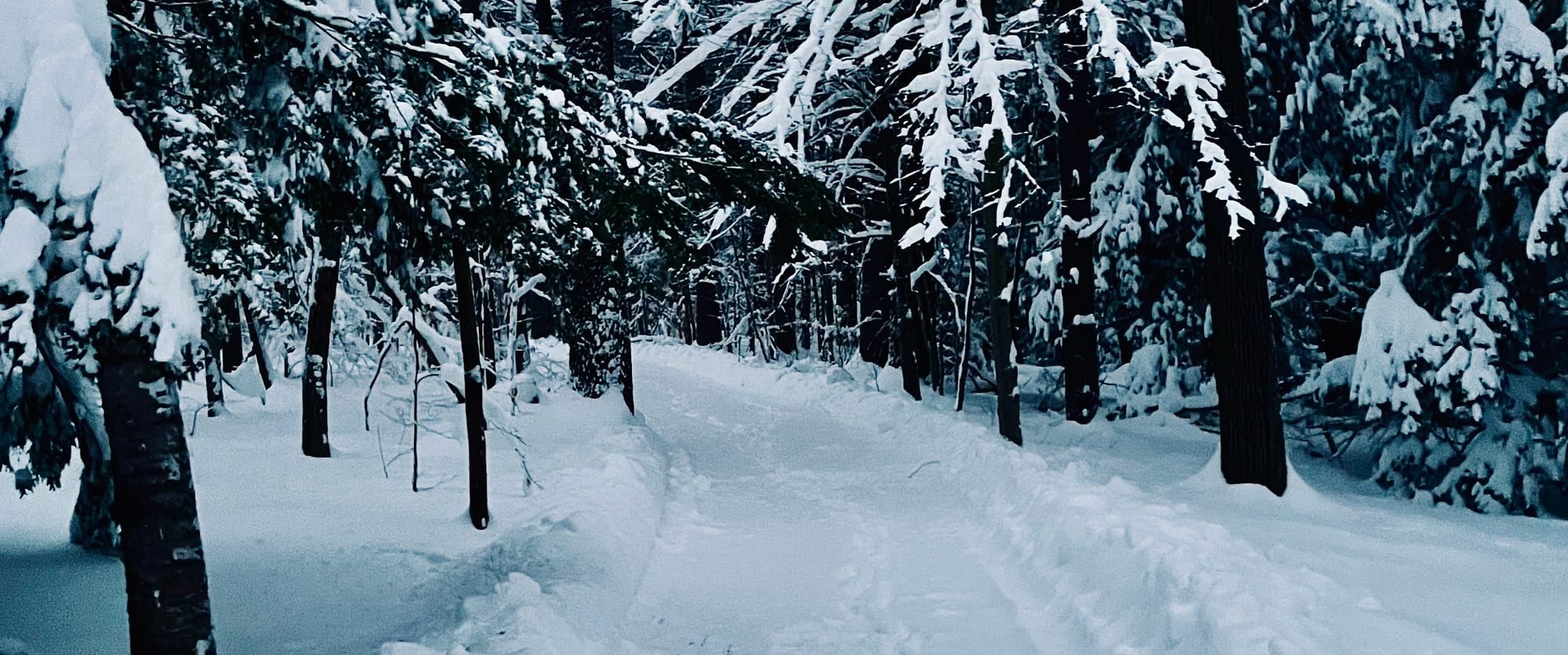Snow Haves and Have Nots
The line between the snow haves and have-nots is sharp this year. We met our friends outside of Boston, where there was no snow. We went further south to Foxboro, and the land was barren and brown.

You probably know this, but it has been snowing a lot out west. We had dinner with friends a few nights ago. One of them is leaving next week for Jackson Hole, Wyoming, to ski for a week with his two sons, who live out west. They are all accomplished skiers. One of the boys—at twenty-eight, not so much a boy—is a freeride skiing coach, meaning he mentors other skiers in the art and safety of skiing unmaintained trails. Think extreme skiing, cascading down through the woods, dropping by helicopter, or hiking uphill (they call it skinning) for the thrill of one pristine ride down.
As of March fourth, Jackson Hole had over four hundred inches of snow, one hundred and forty percent of the annual average. When you read this, the total will have surpassed four hundred and fifty inches. In six days recently, they had sixty inches of snow. Park City has a base of one hundred and thirty inches. At the base of Alta, there are one hundred and seventy-eight inches. At the top of Kirkwood Mountain, south of Carson City, are two hundred and twenty inches of snow. But at the bottom of Kirkwood, there are one thousand, one hundred and seventy-one inches, which may be easier to think of in feet: ninety-eight.
Kirkwood has ninety-eight feet of snow.
The Eastern White Pine is the tallest tree species in New England. It can grow to one hundred and fifty feet. We have several of them outside my window, and I imagine them buried to their necks in ninety-eight feet of snow. In my imagining, they will be completely buried by the end of the season if the snow continues as it has out west, providing a unique opportunity along the way to trudge across the yard in my snowshoes and cut them back at the top. Unfortunately, the chainsaw is in the barn, which is (in this imagined instance) under seventy feet of snow. So . . . not worth retrieving.
People out west would not find this funny, of course, because their houses are buried.
Meanwhile, my brother is ticking a box on his bucket list skiing the Alps in Austria, where the lack of snow is described as extreme. According to CarbonBrief.org, the average length of snow cover in the alps is at a six-hundred-year low. Some resorts were forced to close this winter. The base at many of them is around forty inches, coming close to the base of many of New Hampshire’s ski areas, hovering between twenty-five and thirty inches this year.
I am sure Austria is glad to have my brother there with his family helping them through the season. We get pictures from the top of the mountains, and it looks beautiful, but the lack of snow is evidently worrisome. The local talk is turning to water come spring and summer: if there is not enough snow in the winter, there is not enough snow melt in spring for the people and farms downstream.
The line between the snow haves and have-nots is sharp this year. We met our friends outside of Boston, where there was no snow. We went further south to Foxboro, and the land was barren and brown. At each stop, we described getting a foot of snow last week during the storm. “Yeah, all we got here was rain,” was the discouraged reply.
Why go to the trouble of getting ready for winter—raking leaves, splitting wood, putting up the storms, pulling out the gloves, boots and sweaters—to have it hand you only cold and wet?
But then there are ninety-eight feet of snow out west. Buried homes, abandoned vehicles. It is a “once in a generation” winter season.
And elsewhere, a six-hundred-year declining average snowpack.
Winter. Can’t live with it, can’t live without it.
Published March 14, 2023, in the Monadnock Ledger-Transcript

